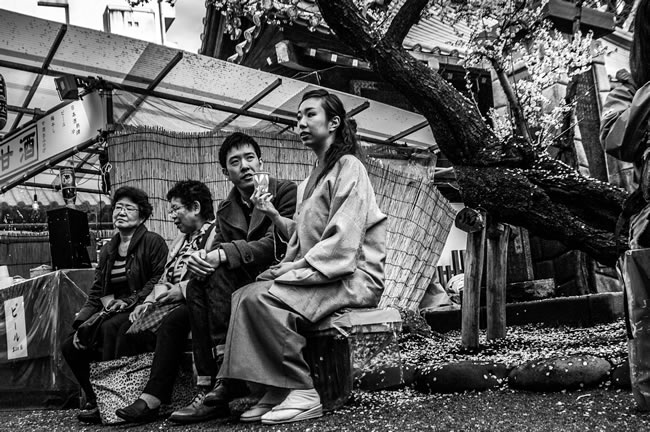
text and photo by Grigoris A. Miliaresis
Is there anyone, I wonder, who hasn’t heard about the blossoming cherry trees? They are one of the most advertised elements of Japanese culture, both by natives and visitors to the country, they are filled with all kinds of aesthetical, ideological or philosophical meanings and their flower is perhaps the most common pattern on anything produced in the Japanese islands aside from that of Mt. Fuji (and, more recently, of Kitty-chan or “Hello Kitty”). But as is often the case in this idiosyncratic culture, for the Japanese the real herald of spring isn’t the cherry trees: it is their cousin, the plum trees (or “Japanese apricots” –the “Prunus mume” is as frequently translated as “Chinese plum” as is “Japanese apricot”) the trees called “ume” (梅) in Japanese.
Up until the Nara period (710-794) when the Japanese referred to the blossoming signaling the beginning of spring, they meant almost exclusively that of the plum tree –in the “Manyoshu” (万葉集), the oldest Japanese collection of poetry, mentions to the plum trees are many times more than those to the cherry trees. And this is hardly surprising considering that the idea of “hanami” (花見), the aesthetic appreciation of blossoming trees comes from China, that the aristocrats of that period drew their cultural references from there and that the Chinese used plum trees for that. And even though the cherry trees started gaining traction little-by-little, the plum trees held their ground, especially in Shinto shrines and home gardens thanks to the belief that they keep evil spirits away in the same way that their fruit, the unbelievably sour umeboshi (梅干し) pickle is believed to be very beneficial to the health.
Personally, I don’t discriminate: despite the differences in their flowers, blossoming plum trees are not lacking compared to blossoming cherry trees and why shouldn’t we have one more chance to sit under the trees and have a tea or a drink enjoying spring’s first fleeting wink while the winter is still in its peak (plum trees blossom before cherry trees when the temperatures are still in single digits)? Still, I can’t not, once again, stand in awe before the ambiguous nature of the Japanese message: aloud, “spring” means “cherry blossoms” but quietly it means “plum blossoms”; those who can find the difference will probably understand more about Japan than me and I’ll be happy to hear their insights. They’ll find me –until the cherry trees start blossoming- in the garden of Yushima Tenjin, in the slope leading to Ueno Park: the plum trees there are exquisite!
Grigoris A. Miliaresis is a journalist and translator. He has worked for many newspapers, magazines and publishing houses and specializes in the Internet, the martial arts and Japan where he has been living for the last few years.